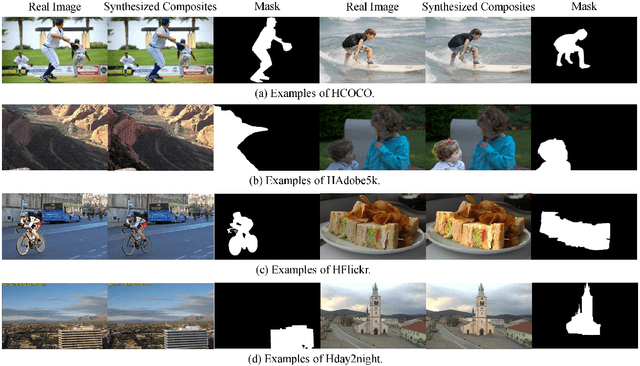Weiyuan Li
Curse of Knowledge: When Complex Evaluation Context Benefits yet Biases LLM Judges
Sep 03, 2025Abstract:As large language models (LLMs) grow more capable, they face increasingly diverse and complex tasks, making reliable evaluation challenging. The paradigm of LLMs as judges has emerged as a scalable solution, yet prior work primarily focuses on simple settings. Their reliability in complex tasks--where multi-faceted rubrics, unstructured reference answers, and nuanced criteria are critical--remains understudied. In this paper, we constructed ComplexEval, a challenge benchmark designed to systematically expose and quantify Auxiliary Information Induced Biases. We systematically investigated and validated 6 previously unexplored biases across 12 basic and 3 advanced scenarios. Key findings reveal: (1) all evaluated models exhibit significant susceptibility to these biases, with bias magnitude scaling with task complexity; (2) notably, Large Reasoning Models (LRMs) show paradoxical vulnerability. Our in-depth analysis offers crucial insights for improving the accuracy and verifiability of evaluation signals, paving the way for more general and robust evaluation models.
SmartRAG: Jointly Learn RAG-Related Tasks From the Environment Feedback
Oct 22, 2024



Abstract:RAG systems consist of multiple modules to work together. However, these modules are usually separately trained. We argue that a system like RAG that incorporates multiple modules should be jointly optimized to achieve optimal performance. To demonstrate this, we design a specific pipeline called \textbf{SmartRAG} that includes a policy network and a retriever. The policy network can serve as 1) a decision maker that decides when to retrieve, 2) a query rewriter to generate a query most suited to the retriever, and 3) an answer generator that produces the final response with/without the observations. We then propose to jointly optimize the whole system using a reinforcement learning algorithm, with the reward designed to encourage the system to achieve the best performance with minimal retrieval cost. When jointly optimized, all the modules can be aware of how other modules are working and thus find the best way to work together as a complete system. Empirical results demonstrate that the jointly optimized SmartRAG can achieve better performance than separately optimized counterparts.
Controlling Character Motions without Observable Driving Source
Aug 11, 2023



Abstract:How to generate diverse, life-like, and unlimited long head/body sequences without any driving source? We argue that this under-investigated research problem is non-trivial at all, and has unique technical challenges behind it. Without semantic constraints from the driving sources, using the standard autoregressive model to generate infinitely long sequences would easily result in 1) out-of-distribution (OOD) issue due to the accumulated error, 2) insufficient diversity to produce natural and life-like motion sequences and 3) undesired periodic patterns along the time. To tackle the above challenges, we propose a systematic framework that marries the benefits of VQ-VAE and a novel token-level control policy trained with reinforcement learning using carefully designed reward functions. A high-level prior model can be easily injected on top to generate unlimited long and diverse sequences. Although we focus on no driving sources now, our framework can be generalized for controlled synthesis with explicit driving sources. Through comprehensive evaluations, we conclude that our proposed framework can address all the above-mentioned challenges and outperform other strong baselines very significantly.
Deep Image Harmonization via Domain Verification
Nov 27, 2019



Abstract:Image composition is an important operation in image processing, but the inconsistency between foreground and background significantly degrades the quality of composite image. Image harmonization, aiming to make the foreground compatible with the background, is a promising yet challenging task. However, the lack of high-quality publicly available dataset for image harmonization greatly hinders the development of image harmonization techniques. In this work, we contribute an image harmonization dataset by generating synthesized composite images based on COCO (resp., Adobe5k, Flickr, day2night) dataset, leading to our HCOCO (resp., HAdobe5k, HFlickr, Hday2night) sub-dataset. Moreover, we propose a new deep image harmonization method with a novel domain verification discriminator, enlightened by the following insight. Specifically, incompatible foreground and background belong to two different domains, so we need to translate the domain of foreground to the same domain as background. Our proposed domain verification discriminator can play such a role by pulling close the domains of foreground and background. Extensive experiments on our constructed dataset demonstrate the effectiveness of our proposed method. Our dataset is released in https://github.com/bcmi/Image_Harmonization_Datasets.
Image Harmonization Datasets: HCOCO, HAdobe5k, HFlickr, and Hday2night
Aug 28, 2019


Abstract:Image composition is an important operation in image processing, but the inconsistency between foreground and background significantly degrades the quality of composite image. Image harmonization, which aims to make the foreground compatible with the background, is a promising yet challenging task. However, the lack of high-quality public dataset for image harmonization, which significantly hinders the development of image harmonization techniques. Therefore, we create synthesized composite images based on existing COCO (resp., Adobe5k, day2night) dataset, leading to our HCOCO (resp., HAdobe5k, Hday2night) dataset. To enrich the diversity of our datasets, we also generate synthesized composite images based on our collected Flick images, leading to our HFlickr dataset. All four datasets are released in https://github.com/bcmi/Image_Harmonization_Datasets.
 Add to Chrome
Add to Chrome Add to Firefox
Add to Firefox Add to Edge
Add to Edge